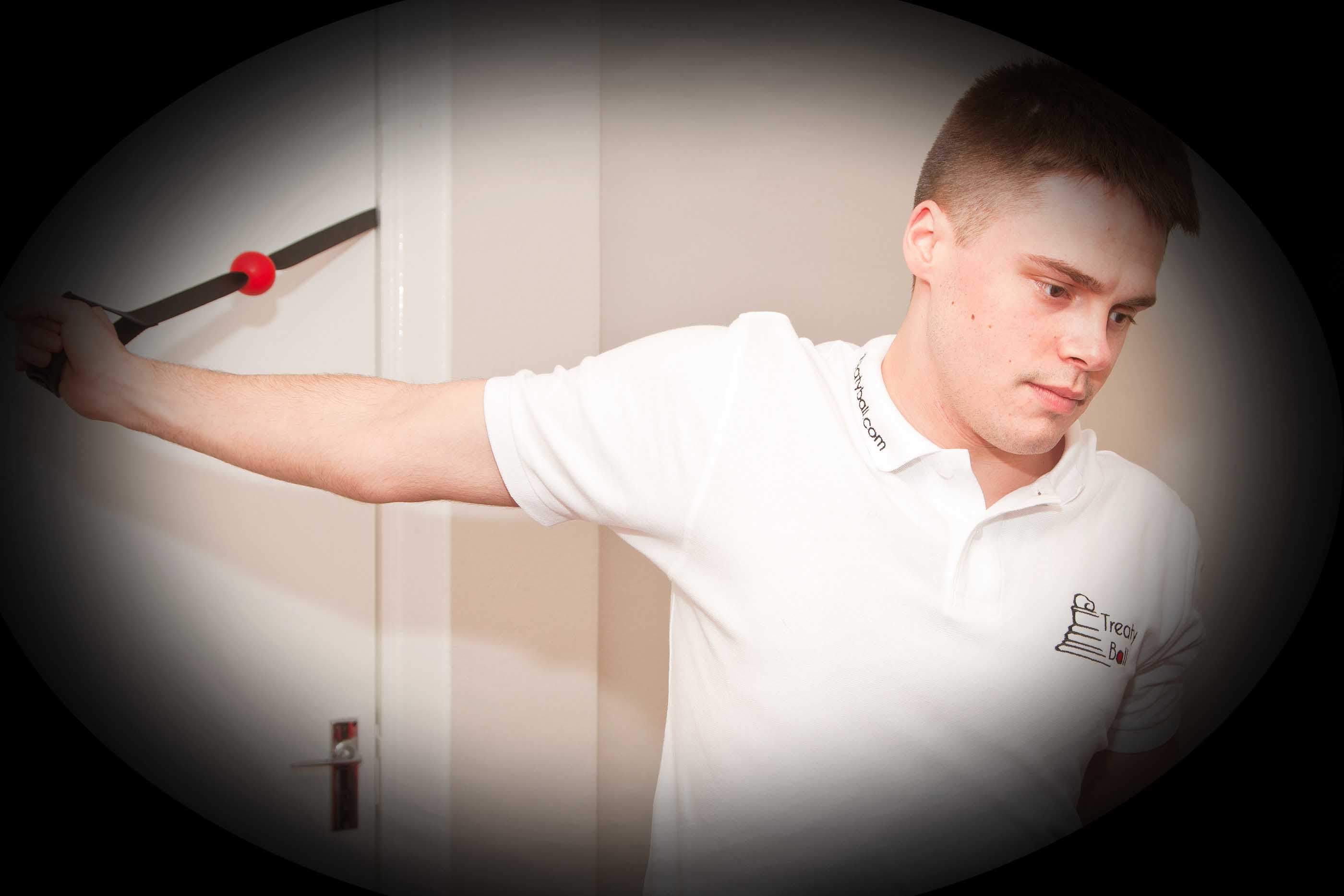
Stretching
Better movement gives you greater performance!
Serious athletes are serious about stretching and warming up to reduce the chance of injury and increase performance. With its durable comfort strap and handle,Treaty Ball is perfect for stretching and increasing flexibility throughout your body.
Flexibility is an integral part of training, and the only way to improve flexibility is to retrain the brain, by breaking down the Trigger points that were restricting you and then stretch regularly. A muscle harbouring a trigger point is prevented by pain from reaching its full stretch range of motion and is also restricted in its strength and endurance capabilities.
Stretching is very important for flexibility, range of motion and injury prevention. Incorporating stretching into your daily workouts is a given but including it in your day routine is just as important to health and body functioning as regular exercise. It relaxes your muscles and increases blood flow and nutrients to your cartilage and muscles. Other tissues that begin to adapt to the stretching process include the fascia, tendons, ligaments, skin and scar tissue.
After you have performed Trigger point therapy it is very important to stretch with Treaty Ball. Use the stretching strap by placing the rubber handle over your foot (for lower body stretching) and in your hand (for upper body stretching) then use the moveable red ball to act as a lever by tilting it to lock onto the strap, which will give you an opportunity to maximise your stretch potential. Gradually and gently stretch the treated muscle through its full range of movement up to 3 times, for 3 to 10 seconds hold each time, with a pause to deep breathe and consciously relax between each cycle.
Top Health Benefits of Stretching
Stress Relief
A buildup of stress causes your muscles to contract, making you feel tense and uneasy. This tension can lead to having a negative impact on mind as well as your body. Stretching loosens tight muscles which helps your muscles both relax and increase blood flow. It also encourages the release of endorphins, providing a sense of tranquility and euphoria.
Postural Alignment
Stretching helps ensure correct posture by lengthening tight muscles that pull areas of the body away from their intended position and keeping your muscles loose. With reduced pain, there is a reduced desire to hunch or slouch
Enables Flexibility
It improves flexibility and range of motion reducing your risk of injury.
Increases Stamina
Stretching loosens your muscles and tendons which relieves muscle fatigue and increases blood flow. With stretching, you can delay the onset of muscle fatigue by ensuring oxygen is efficiently flowing through your blood, thereby increasing your endurance.

Decreases Risk of Injury
It will help to supply a greater nutrient supply to muscles, thereby reducing muscle soreness and helping to speed recovery from muscle and joint injuries or stiffness.
Improve Energy Levels
Muscles tighten when we get tired and that makes us feel even more lethargic, so feel free to stand up and do some stretches. It will help you to quickly and efficiently revitalize your energy levels helping your mind and body be more alert.
Promotes Blood Circulation
It increases blood flow to the muscles. Greater blood circulation helps promote cell growth and organ function. The heart rate will also lower since it doesn't have to work as hard and blood pressure will become more even and consistent.
Improve Athletic Performance
Regular stretching will relax all of your muscles and therefore enable them to be more available during exercise.
Reduced Soreness
Stretching before and after a workout gives your muscles time to relax. Increases in blood flow increase nutrient supply to the muscles and relieve soreness in the muscles after a workout.
Reduces Cholesterol
Paired with a healthy diet, engaging in prolonged stretching exercises can help reduce cholesterol in the body. This could prevent and even reverse the hardening of arteries, helping one avoid heart diseases.
Types of Stretching: FYI
1. Static Stretching
Static stretching involves gradually easing into the stretch position and holding the position. The amount of time a static stretch is held may be anything from 6 seconds to 2 minutes. Often in static stretching you are advised to move further into the stretch position as the stretch sensation subsides.
2. Ballistic Stretching
Ballistic stretching uses the momentum of a moving body or a limb in an attempt to force it beyond its normal range of motion.
3. Dynamic Stretching
Dynamic stretching consists of controlled leg and arm swings that take you gently to the limits of your range of motion.
Where the event requires a dynamic movement then it is appropriate and perhaps necessary to conduct dynamic stretching exercises. Start off with the movement at half speed for a couple of repetitions and then gradually work up to full speed.

4. Active Stretching
An active stretch is one where you assume a position and then hold it there with no assistance other than using the strength of your agonist muscles. Active stretching is also referred to as static-active stretching.
5. Passive Stretching
Passive stretching is also referred to as relaxed stretching, and as static-passive stretching. A passive stretch is one where you assume a position and hold it with some other part of your body, or with the assistance of a partner or some other apparatus. eg. Treaty Ball..
6. Isometric Stretching
Isometric stretching is a type of static stretching which involves the resistance of muscle groups through isometric contractions (tensing) of the stretched muscles.
7. Assisted Stretching
Assisted stretching involves the assistance of a partner who must fully understand what their role is otherwise the risk of injury is high. A partner can be employed to assist with Partner stretches and Proprioceptive Neuromuscular Facilitation (PNF) techniques.
